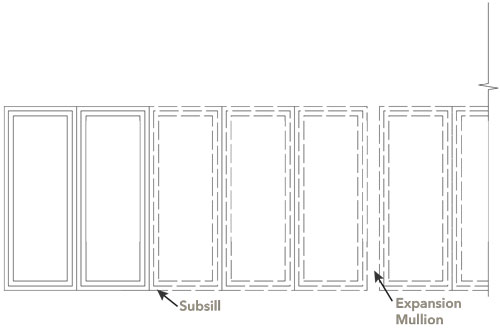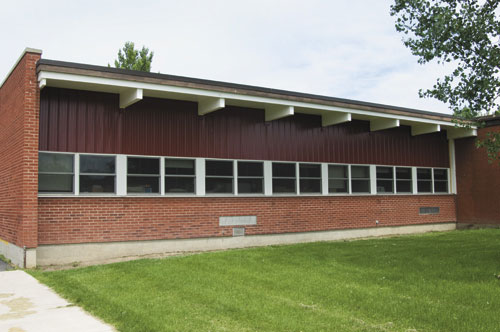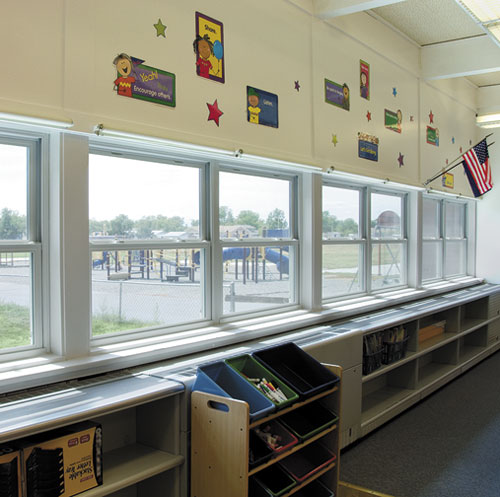Fiberglass Windows: A Sustainable Choice in Non-Residential and Multi-Family Buildings
Horizontal Ribbon Windows
Design recommendations
In addition to the recommendations for Punched Openings, the greater width of Horizontal Ribbons often requires special head/jamb details, reinforcing mullions, expansion mullions, and subsills to resist wind loads, allow for construction tolerances, and provide adequate water management. Expansion / control mullions are recommended every 20' maximum. Minimum 1/2" clearance is recommended at each jamb for masonry openings greater than 10' in width. Subsill systems that weep incidental moisture to the exterior are recommended for water management in openings like horizontal ribbons where there are multiple vertical joints between windows. (See Figure 13.)
  |
|
Figure 13: West Elementary School utilizing horizontal ribbon windows across the façade. Images courtesy of Pella Corporation |
|
Case Study: West Elementary School Renovation |
About 15 miles southwest of Billings, in Laurel, MT, is West Elementary School. It sits beside a playground on 15 grassy acres and accommodates 350 students in kindergarten through fifth grade. Built in 1956, with an addition in 1979, West Elementary School's original aluminum windows served as more of a hindrance than a help in the learning process for both teachers and students and were long overdue for replacement. Noise from the playground distracted the students. Teachers had no control over temperature; it was always either too hot or too cold. The school has no air conditioning, and attempting to open the non-screened single-pane windows for improved airflow resulted in bugs flying in-including bees that would sting the children. During winter, when average outside temperatures range from 15 to 43 degrees, the extremely drafty old windows cost the school extra money on heating bills. The administration for West Elementary School was looking for a functional window that was durable, energy-efficient and low-maintenance. The project didn't start until July, so the contractor had only seven weeks to install 165 units before school began. The original windows had supported two-inch-thick glass blocks above. The intent was to cut the window frames, take the windows out for replacement and leave the glass blocks in place. But since they had been mortared to the windows, the glass blocks had to be removed and replaced with steel panels.
|










